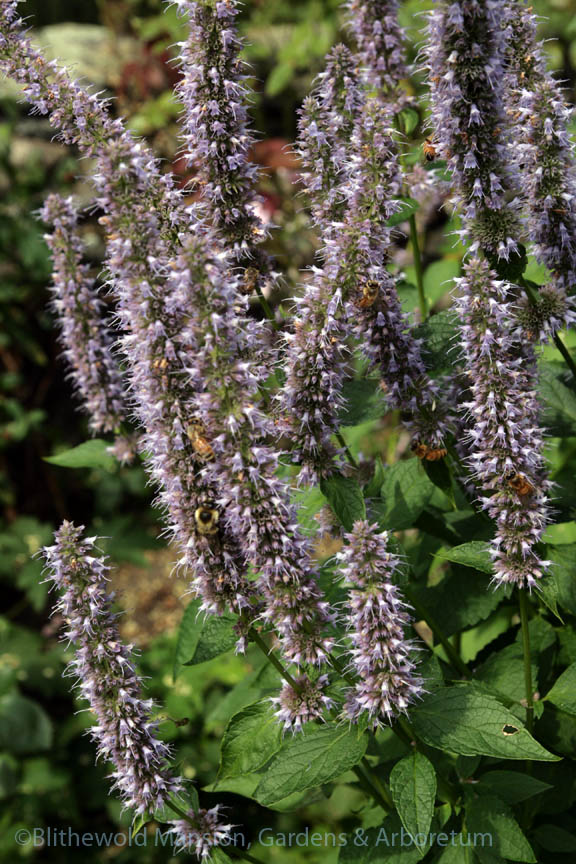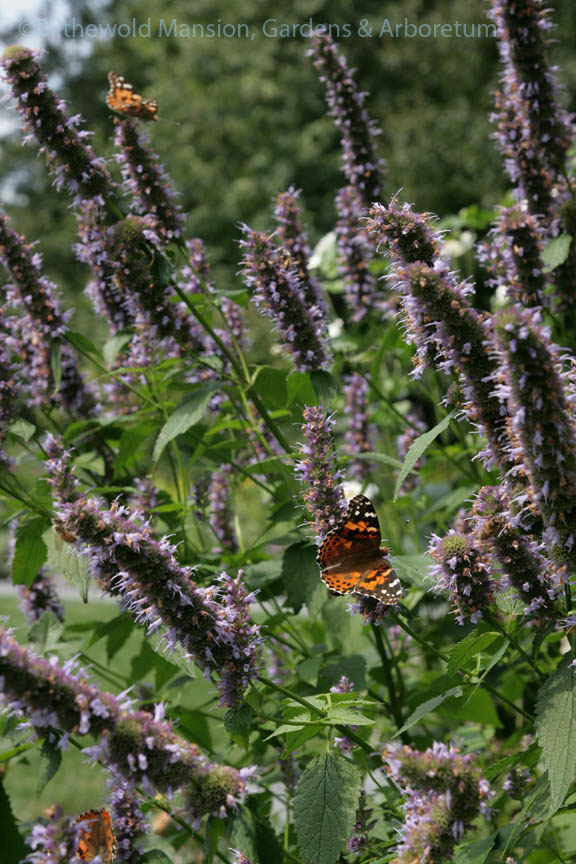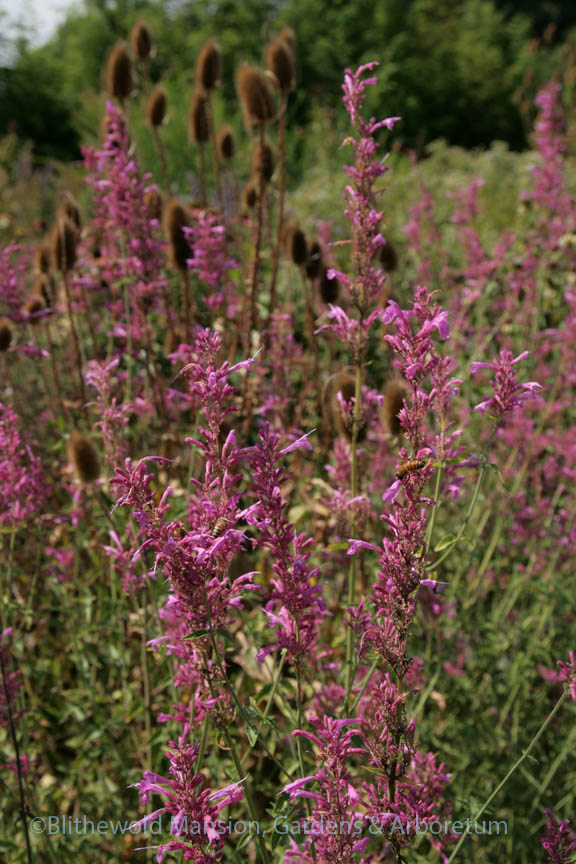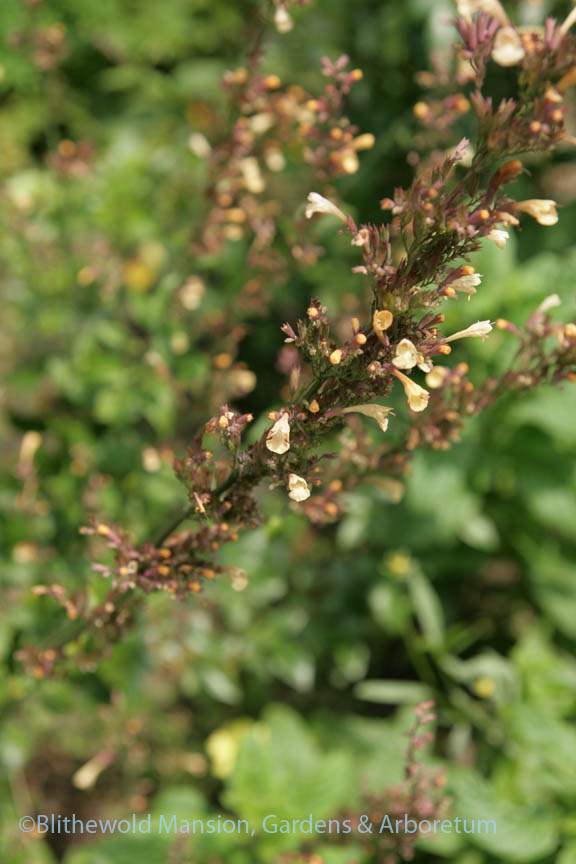The awesomeness of agastache
I am as fickle as any gardener. I’ll pick a new favorite color, fragrance, leaf, flower, and plant habit every other week (or day) and reserve the right to change my mind over the slightest disappointment. That said, the hyssops, which have been blooming since June, are vertically eye-catching, and smell like candy, have managed to stay at the top of my favorites list for months now. I also think they deserve the “Most Attractive Plant” award in the 2012 Blithewold yearbook superlatives.
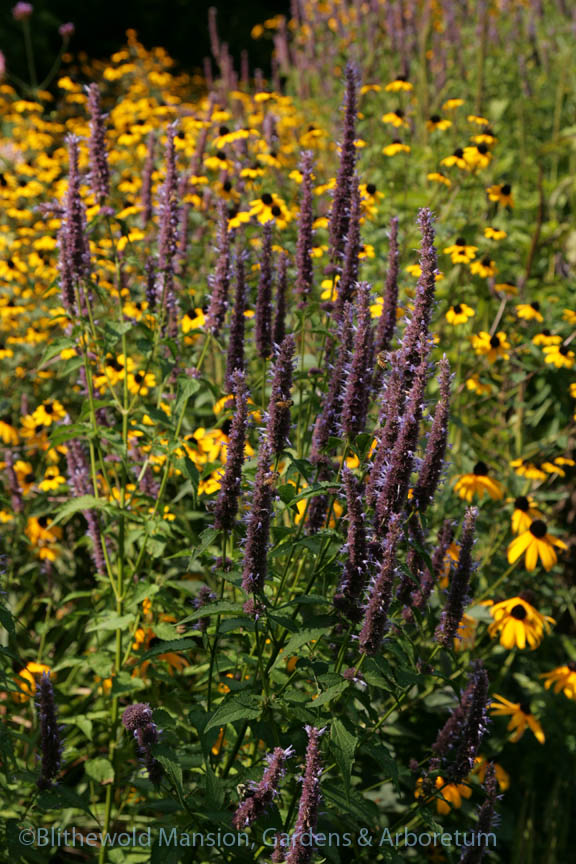 Agastache, which is pronounced ah-GAH-stah-kee or aga-STAK-ee depending on who says it (tomato, tomahto), is Greek for very much (agan) spike (stachys) according to Allen J. Coombes’ The Hamlyn Guide to Plant Names. (He pronounces it the first way.) Very much spike is right. And probably because their native habitat is sharply drained hillsides they’re fairly sturdy, unfussy, and drought tolerant. They are also hardier than I ever thought. Around here anyway, wet winters and poor drainage are more likely to do them in than cold temperatures.
Agastache, which is pronounced ah-GAH-stah-kee or aga-STAK-ee depending on who says it (tomato, tomahto), is Greek for very much (agan) spike (stachys) according to Allen J. Coombes’ The Hamlyn Guide to Plant Names. (He pronounces it the first way.) Very much spike is right. And probably because their native habitat is sharply drained hillsides they’re fairly sturdy, unfussy, and drought tolerant. They are also hardier than I ever thought. Around here anyway, wet winters and poor drainage are more likely to do them in than cold temperatures.
We are growing North American native anise hyssop (A. foeniculum, zone 4-11) because it seeds itself all over the Display Garden. Its spikes start out a lovely dusty blue and deepen over the season and are more slender than its hybrid child ‘Blue Fortune’ (zone 6-9; crossed with Korean A. rugosa). That’s the one we’re growing in the Rose Garden this year and the bees can’t get enough of it. My personal favorite, planted in the Display Garden and North, is ‘Black Adder’ (zone 6-9). The deep indigo bracts are spectacular especially now that every plant is also decorated with its own klatch of a half-dozen or more American Lady butterflies. (At least I think that’s what they are.) All 3 are standing a good 4-5′ tall now and need propping – particularly top-heavy ‘Blue Fortune’ even though we lopped them back by half in late May or early June. In my own garden, I grew ‘Golden Jubilee’ (zone 5-9), which has brilliant chartreuse foliage through mid-summer and pale grey-blue spikes. The best thing about that plant is that its seedlings have already started to pop up. The more the merrier. We have no intention of deadheading any of these because we’re looking forward to their structure over the winter, but we have used some stems in flower arrangements.
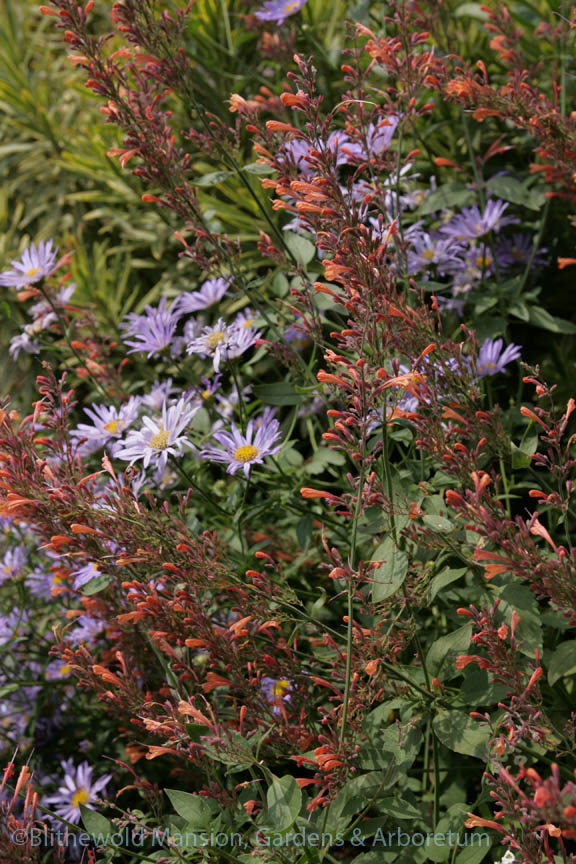 I always though that the cultivars of hummingbird mint like ‘Heatwave’, ‘Acapulco Orange’, and ‘Summer Glow’ were tender but they’re at least as hardy as ‘Black Adder’ and ‘Blue Fortune’. Both ‘Heatwave’ (zone 5-10) and A. mexicana ‘Acapulco Orange’ (zone 5-9) came back for us this year but last winter was unusually dry and mild so it probably wasn’t a good test. We have our fingers crossed for ‘Summer Glow’ (zone 6-9) in the North Garden, which in its first year isn’t as outstanding as the others but certainly could be the prettiest of all with one more season’s growth. We’ll probably take cuttings and overwinter a stock plant in the greenhouse just in case it doesn’t make it outside. The slightly contrasting bracts on ‘Acapulco Orange’ and ‘Summer Glow’ make those my faves over ‘Heatwave’ (plus they’re orange) but the hummingbirds probably have no preference at all.
I always though that the cultivars of hummingbird mint like ‘Heatwave’, ‘Acapulco Orange’, and ‘Summer Glow’ were tender but they’re at least as hardy as ‘Black Adder’ and ‘Blue Fortune’. Both ‘Heatwave’ (zone 5-10) and A. mexicana ‘Acapulco Orange’ (zone 5-9) came back for us this year but last winter was unusually dry and mild so it probably wasn’t a good test. We have our fingers crossed for ‘Summer Glow’ (zone 6-9) in the North Garden, which in its first year isn’t as outstanding as the others but certainly could be the prettiest of all with one more season’s growth. We’ll probably take cuttings and overwinter a stock plant in the greenhouse just in case it doesn’t make it outside. The slightly contrasting bracts on ‘Acapulco Orange’ and ‘Summer Glow’ make those my faves over ‘Heatwave’ (plus they’re orange) but the hummingbirds probably have no preference at all.
Are you as in love with agastache as I am? Which ones do you grow?

